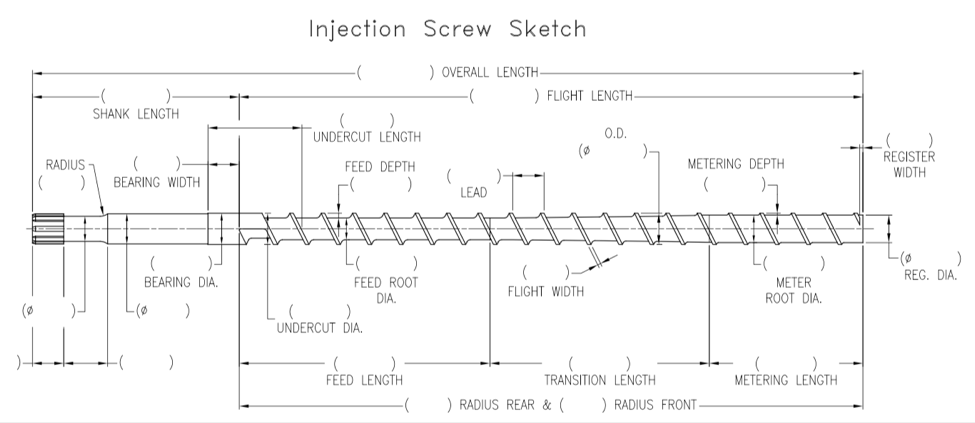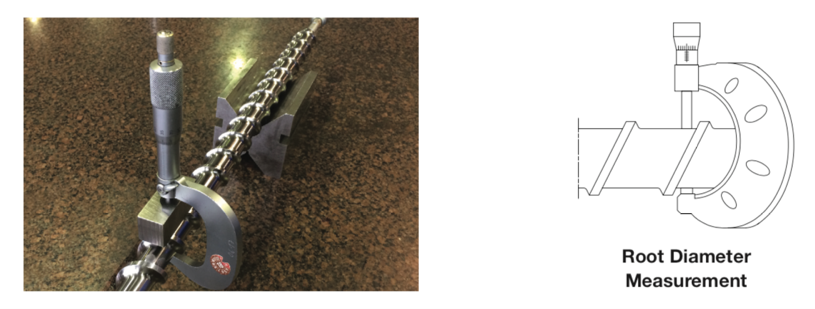Why should I inspect my screw?
Every plastic processor should include routine inspection of plasticizing components in their maintenance program. Using worn components can cause many issues including decreased throughput, increased energy usage, and even equipment damage.
The best maintenance programs have regularly scheduled inspections where components are measured. Over time these measurements help to create a wear profile identifying the lifespan of a component.
Knowing the expected lifespan of a component allows for planned replacement and repair.

Why do screws wear?
There are many causes of component wear. Wear is categorized into three broad categories: abrasive, adhesive and corrosive.
Abrasive- wear caused by resin fillers and additives; these fine, hard particles abrade the metal surface. Ex. calcium carbonate, glass fibers[JA1] [KL2]
Adhesive- wear caused by metal to metal contact; this is caused by improper alignment or incompatible geometries.
Corrosive- wear due to chemicals reacting with metal surfaces; release of gasses from degraded resin. Examples include PVC and fluorocarbons.
Other factors that affect wear include:
- screw, barrel, drive alignment
- uniformity of heating
- resin type
- screw/barrel materials
- excessive back pressure
- high screw speeds
Inspecting Your Screw
Before inspecting, remove all excess resin and place the screw on a clean, flat work surface. Start by examining the general condition of the screw. Look for damage, pitting or cracks. If available, use a granite table to check the straightness of screw by rolling it and looking for bowing. If bent, feeler gauges can be used to measure.

Use a micrometer to measure the following values:
- Shank diameter
- Screw Outer Diameter
- Root Diameter (feed, metering)
- Channel Depth (feed, metering)
- Shank length
- Flight Length
- Flight Width
*Tip: Use a parallel test bar spanning two flights to measure the outer diameter of the screw. 
Measuring Your Barrel
Compared with the screw a barrel is relatively easy to measure. Using a bore gauge measure as far down each end of the barrel as possible. Record measurements to compare to original/last values.
Interpreting Values
After recording measurements compare them to previous values to track a component's wear over time. Doing this at standard intervals allows you to create a wear profile and be better prepared for component repair/replacement.
See the SPI Dimensional Guidelines for reference on when a component is too worn to continue using.
Would you like some help?
Our experienced engineers can be scheduled to help with measurements. Also, through Reiloy USA we offer repair and replacement services of worn components.
Contact us if you would like to schedule a visit or get a quote.
